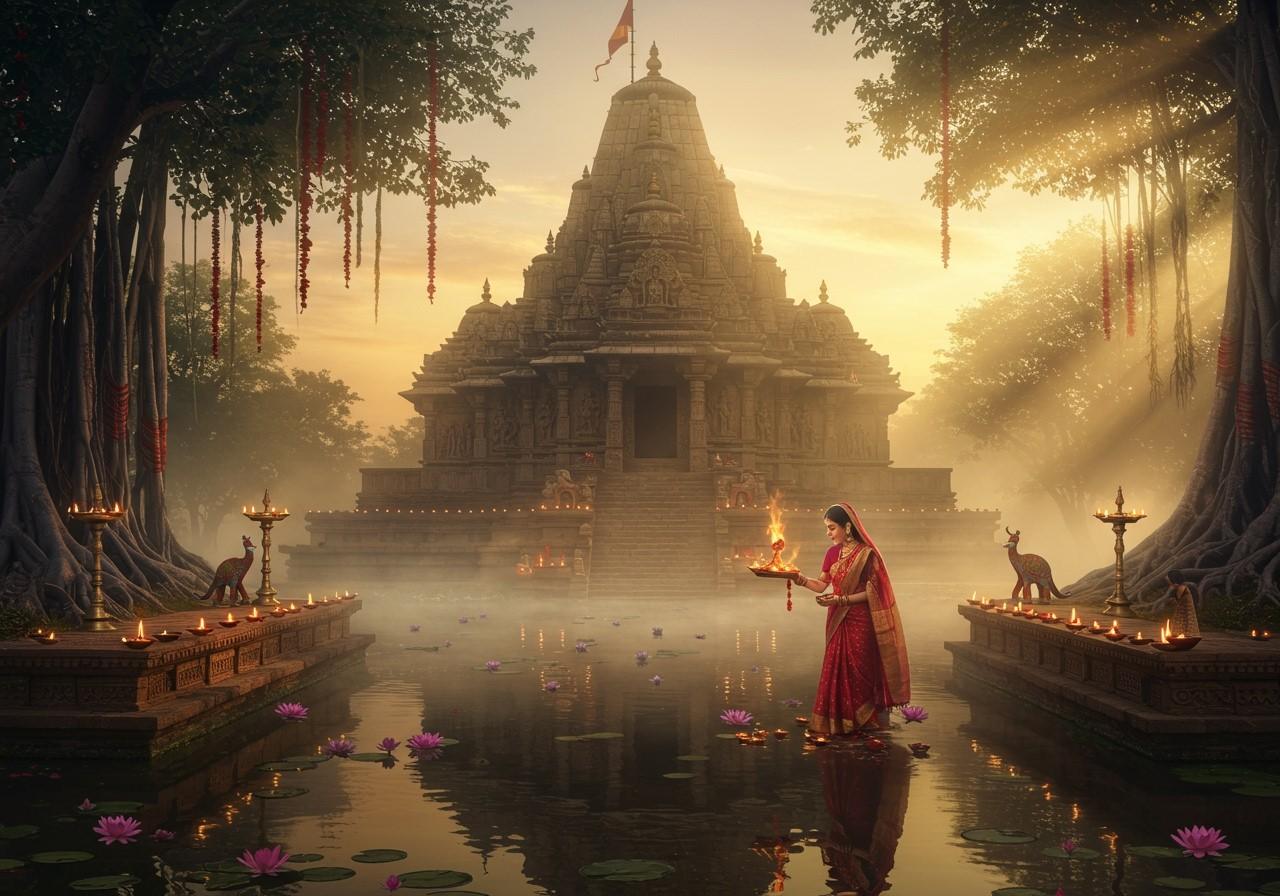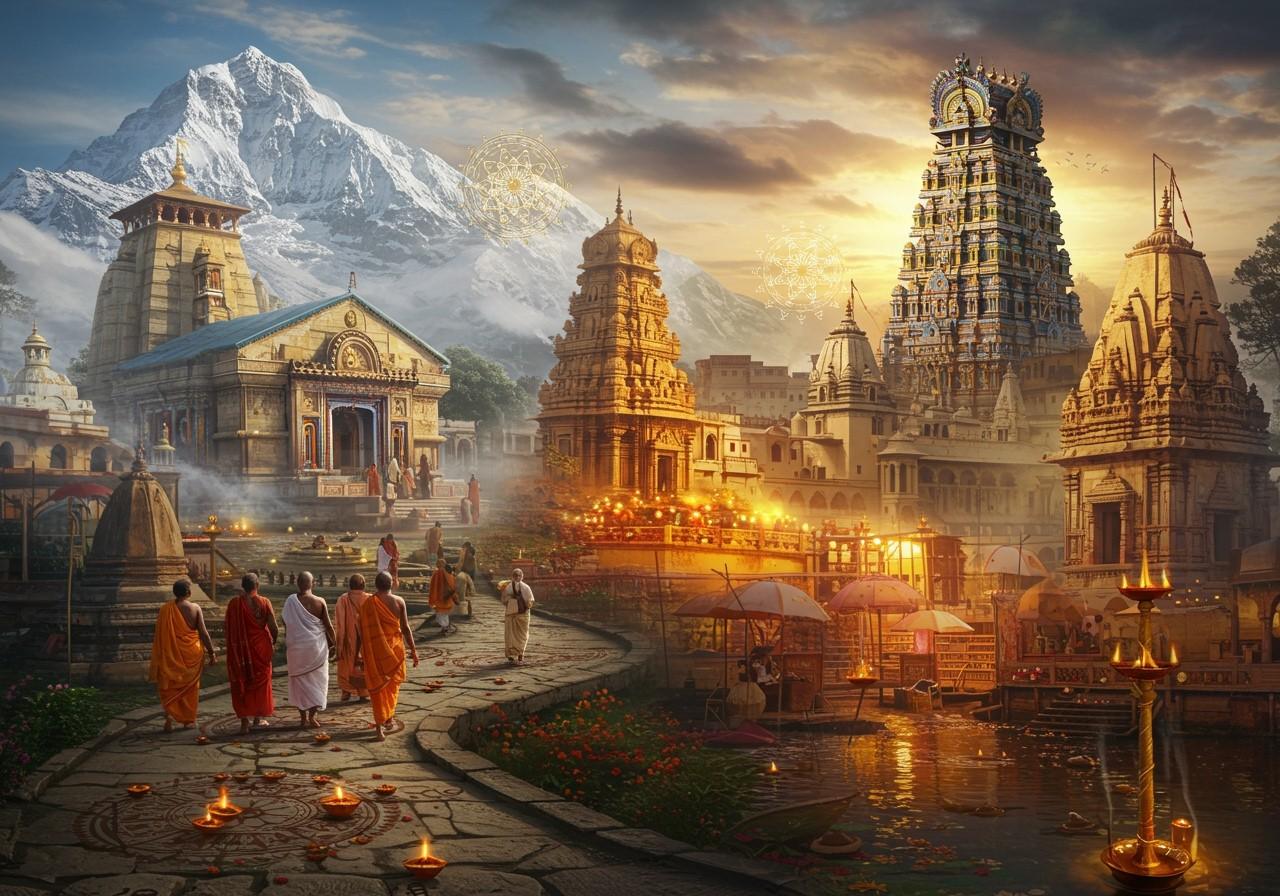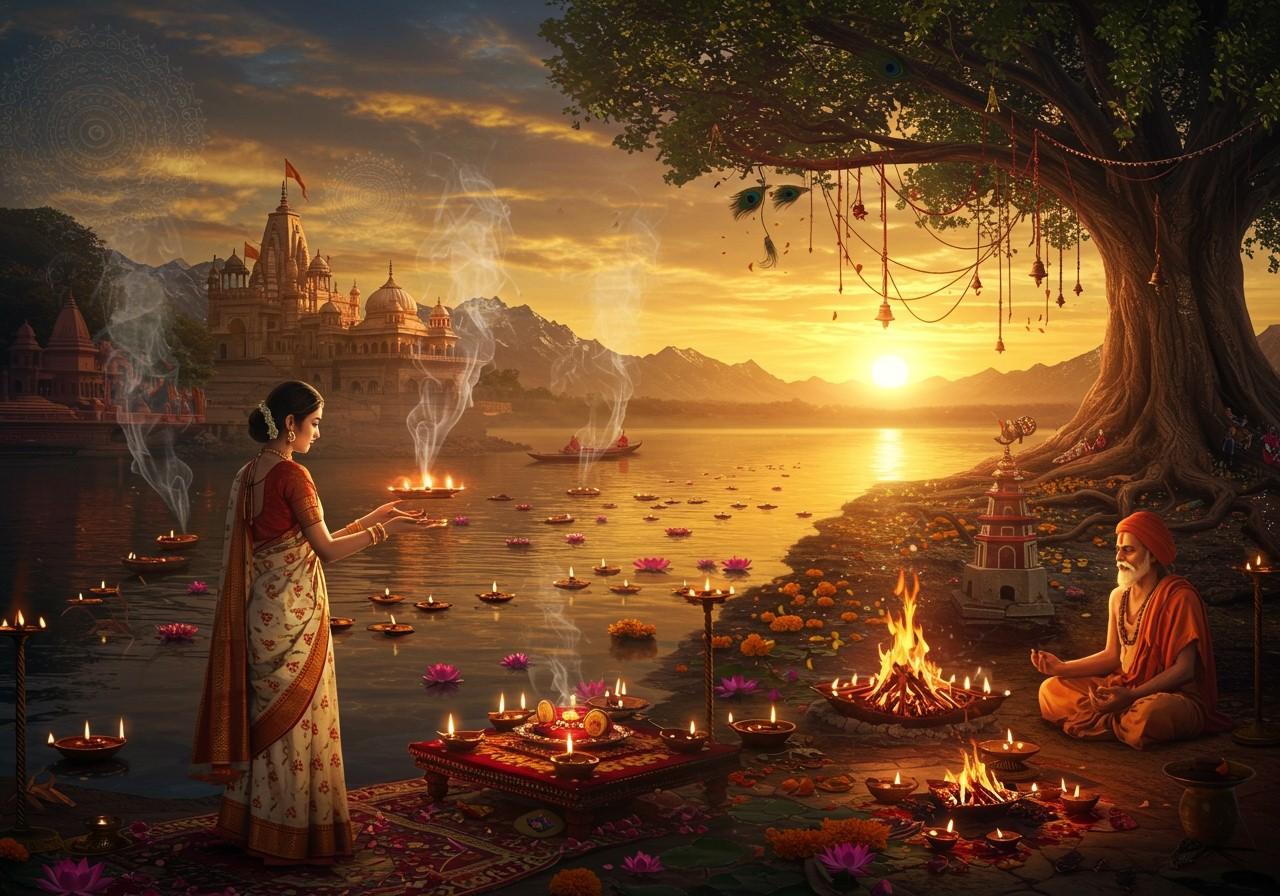
India, a land steeped in spirituality and diverse religious traditions, is home to countless temples and sacred sites, attracting millions of devotees and tourists yearly. This exploration delves into India’s rich spiritual heritage, offering insights into temple history, the significance of the Char Dham Yatra, the grandeur of the Kumbh Mela, and the specifics of Pooja. Whether seeking spiritual solace, cultural understanding, or historical knowledge, this journey through India’s sacred landscape promises an enriching experience.
A Glance into India’s Temple History
India’s temples are more than mere places of worship; they are vibrant centers of education, art, community gatherings, and cultural preservation. Their architecture has evolved over centuries, from ancient cave temples to the elaborate Dravidian and Nagara styles. Key historical periods, such as the Gupta era and the Chola dynasty, have significantly influenced temple construction, leaving behind a legacy of architectural marvels.

Unique Features of Temple Architecture
North Indian (Nagara) and South Indian (Dravidian) temple architectures boast unique features:
- Shikhara (spire): A distinctive tall structure crowning Nagara style temples, symbolizing a mountain peak.
- Garbhagriha (sanctum sanctorum): The innermost shrine, housing the deity, representing the womb of the temple.
- Mandapa (pillared hall): A spacious hall for congregational activities, often adorned with intricate carvings and sculptures.
- Vimana: The towering structure over the sanctum in Dravidian architecture, often elaborately decorated.
- Gopurams (gateway towers): Massive entrance towers characterizing Dravidian temples, showcasing intricate artwork and sculptures.
Famous Temples Showcasing Architectural Brilliance
- Khajuraho: Celebrated for its intricate and often erotic carvings, depicting various aspects of life.
- Brihadeeswarar Temple: A monumental structure built by the Chola dynasty, showcasing impressive Dravidian architecture.
- Meenakshi Temple: Renowned for its towering gopurams and vibrant festivals, a hub of religious and cultural activity.
Royal patronage played a crucial role in temple construction throughout history. However, periods of invasion and colonialism posed significant challenges to preservation efforts. Today, many of these temples stand as testaments to India’s rich artistic and architectural heritage.
Embarking on the Char Dham Yatra
The Char Dham Yatra, one of India’s most sacred pilgrimages, encompasses four holy sites nestled in the Himalayas: Yamunotri, Gangotri, Kedarnath, and Badrinath. Each site holds profound geographical and spiritual significance for Hindus, attracting pilgrims seeking spiritual purification and blessings.

Dive deeper into the world of Indian pilgrimages.
The Sacred Sites
- Yamunotri: The source of the Yamuna River, dedicated to Goddess Yamuna.
- Gangotri: The source of the Ganges River, revered as the most sacred river in Hinduism.
- Kedarnath: Dedicated to Lord Shiva, one of the twelve Jyotirlingas, attracting devotees from across the globe.
- Badrinath: Dedicated to Lord Vishnu, a significant pilgrimage site for Vaishnavites.
Practical Information for Pilgrims
- Best time to visit: Summer months (May to October) offer the most favorable weather conditions for the arduous journey.
- Necessary preparations: Physical fitness is crucial due to the challenging terrain. Warm clothing, appropriate footwear, and essential medications are necessary.
- Accommodations: Local guesthouses, ashrams, and dharamshalas offer basic accommodation along the pilgrimage route.
The Char Dham Yatra is not just a spiritual journey but also an opportunity to witness the breathtaking Himalayan landscape. However, the increasing number of pilgrims has raised concerns about environmental impact and cultural preservation. Sustainable tourism practices are being implemented to mitigate these challenges and ensure the long-term preservation of these sacred sites.
The Grand Spectacle of the Kumbh Mela
The Kumbh Mela, recognized by UNESCO as an Intangible Cultural Heritage of Humanity, is the world’s largest peaceful congregation of pilgrims. Held every 12 years at four rotating locations—Prayagraj, Haridwar, Ujjain, and Nashik—it is a profound expression of faith and devotion.
Ritual Bathing and Significance
The central ritual of the Kumbh Mela is the Shahi Snan, a sacred bath in the holy rivers. Millions of devotees believe that this ritual cleanses sins and grants liberation (moksha). The Mela is also a vibrant hub of religious discourses, cultural performances, and the gathering of ascetics (sadhus) and spiritual leaders.
Organizing the Mega Event
Organizing the Kumbh Mela is a massive logistical undertaking, requiring extensive planning and coordination. Authorities provide facilities for pilgrims, including accommodation, sanitation, and security arrangements, to ensure a smooth and safe experience for all attendees.
Pooja (Puja): The Act of Worship
Pooja, an integral part of Hindu religious practices, is an act of worship and reverence towards deities. It involves rituals, offerings, and prayers to invoke divine blessings. Different types of Pooja cater to various occasions and intentions, from daily rituals (Nitya Puja) to special ceremonies (Naimittika Puja) and occasional rites (Kamya Puja).

Essential Elements of a Pooja Setup
- Altar: A designated sacred space, often adorned with flowers and religious symbols, where the deity is placed.
- Deity idols or images: Representations of the gods and goddesses being worshipped.
- Sacred items: Incense, lamps, flowers, fruits, and other offerings symbolize devotion and respect.
Find authentic puja items like cotton wicks and more at Poojn.in
Poojn.in also offers premium camphor for your puja needs.
Step-by-Step Pooja Process
- Invocation (Avahana): Invoking the presence of the deity into the idol or image.
- Offering (Naivedya): Offering food, fruits, and other items to the deity as a symbol of devotion.
- Concluding prayers (Aarti): Offering prayers with a lighted lamp, accompanied by chanting and ringing bells.
Specific mantras, mudras (hand gestures), and sacred texts are integral to Pooja ceremonies. The priest (Pujari) guides the rituals, often involving family members in the process. Popular Pooja ceremonies like Ganesh Chaturthi, Diwali Puja, and Navratri hold significant cultural and spiritual importance in India.
Poojn.in: Your Partner in Spiritual Practices
Poojn.in, India’s leading online store for cultural and religious goods, provides a wide range of authentic Pooja items and supplies, delivered conveniently to your doorstep. From complete Puja kits to specialized ritual items, Poojn.in simplifies the process of observing traditional practices.
Prepare for Saraswati Puja with our specialized Dashakarma kit.
Product Categories Available at Poojn.in
- Complete Puja Samagri Collections: Ready-to-use kits for all major ceremonies, ensuring you have everything you need.
- Temple-Grade Worship Materials: High-quality brass and copper items, pure cotton wicks, premium camphor, and ghee for authentic rituals.
- Specialized Ritual Items: Navagraha puja items, yantras, religious symbols, silver coins, and traditional puja attire.
- Authentic Ceremonial Supplies: Gangajal, sandalwood products, puja books and scriptures, and ceremonial kalash.
Conclusion
India’s spiritual heritage, a vibrant tapestry of temples, rituals, and sacred sites, offers a profound connection to history, culture, and community. This journey through India’s spiritual landscape highlights the significance of religious practices in daily life. From the grandeur of ancient temples to the sacred Char Dham Yatra and the massive Kumbh Mela, each element reflects India’s dedication to preserving its rich traditions.
By understanding and participating in these practices, you not only honor your heritage but also find spiritual fulfillment and a sense of belonging. Whether you are visiting temples, embarking on pilgrimages, performing Pooja at home, or seeking authentic ritual items online, these experiences bring you closer to the divine and enrich your life. Embrace the convenience and authenticity offered by Poojn.in to enhance your spiritual journey.


